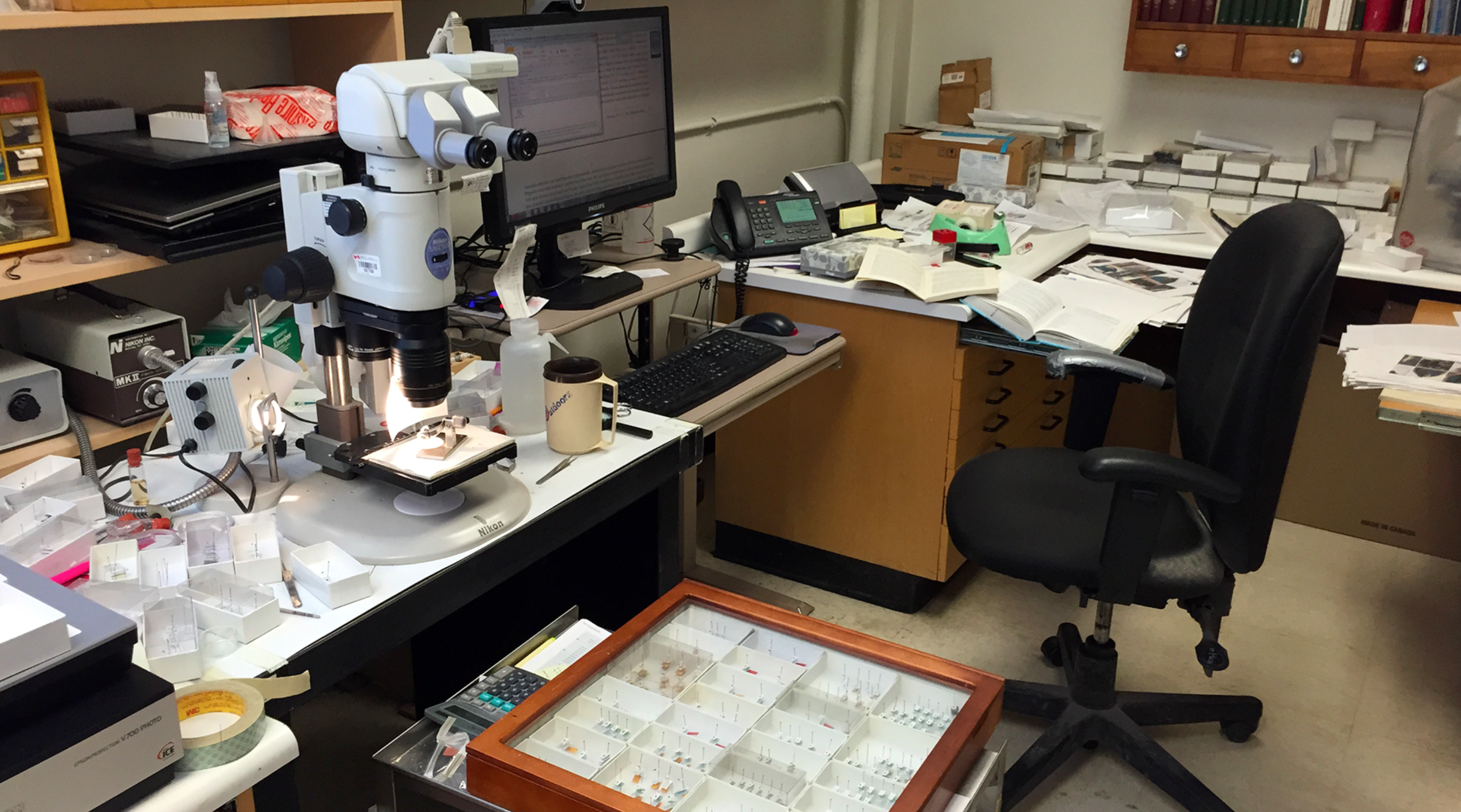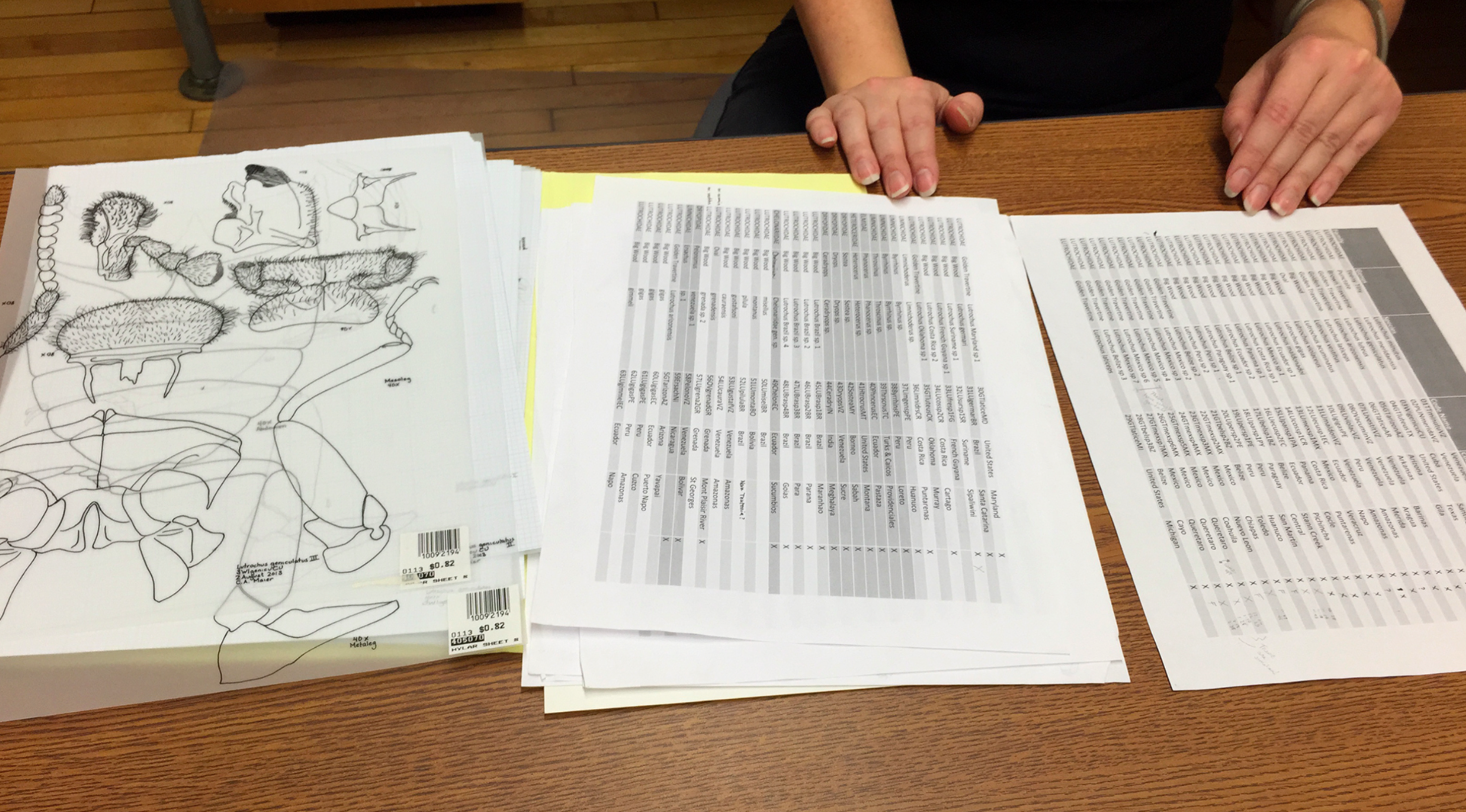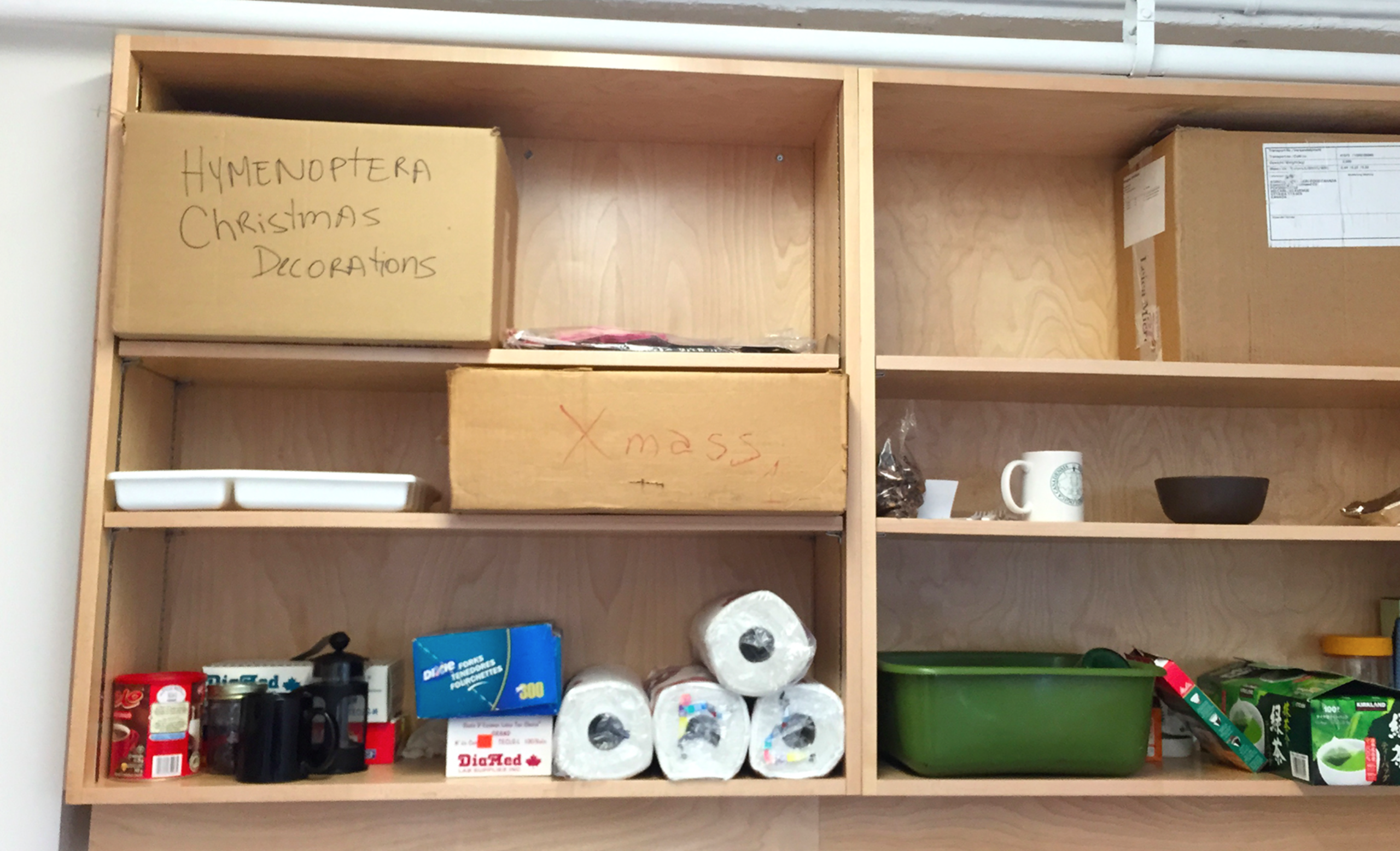The Transforming Taxonomic Interfaces (TTI) project, a collaboration between the Graduate School of Library and Information Science and the Illinois Natural History Survey, aims to create a new generation of software and human-computer interfaces for biological taxonomists through ethnographic research and design-thinking methodologies. Working with Professor Michael Twidale, Matt Yoder, and Kenney Guo, I have conducted interviews with taxonomists working at the Illinois Natural History Survey, The Field Museum of Natural History in Chicago, and at the Canadian National Collection of Insects in Ottawa. Based on our findings from these interviews as well as other ethnographic fieldwork, we are beginning to design and prototype interfaces that solve problems we've identified and reduce the barriers that bad software interfaces bring to research.
I went to labs at the Illinois Natural History Survey, Purdue University, the Field Museum of Natural History in Chicago, and the Canadian National Collection of Insects in Ottawa and interviewed taxonomists there. I also spent time doing ethography; watching the researchers do their work, and even had them teach me some taxonomy and taxonomic research methods.
I also decided to take lots of photos of researchers' workspaces and environment, because it seemed to me that the physical layout of their space was very relevant to how they work, rather than just their mental models and software. This would later turn out to be important, because they are working with actual physical objects (insect specimens), so how they move them in physical space is very intertwined with their research process and even how they create their insect species definitions and mental models.


After conducting many interviews, I started to look for similarities in their workflow process, and to find common pain points. Working with my advisors, Professor Michael Twidale of the Graduate School of Library and Information Science and Matt Yoder of the Illinois Natural History Survey, I analyzed these findings to determine which one we could design an interface to address, and which ones would have the biggest impacts for researchers.
I sharpened my anthropological and ethnographic research skills during the course of this project. The biggest aspect I improved on was gaining the trust and confidence of the people I was researching. When I first showed up for a weeklong stay at the Canadian National Collection of Insects, many researchers were reluctant to spend their time talking to me, as they had gone through similar (in their mind) situations many times in the past, where a researcher from a computer science or technology program would come and ask them questions and promise to build something useful. Often they come back with something that doesn't really do what they need to do. However, after the first day, I was able to gain their trust, by spending more informal time with them, such as eating lunch together, and by talking about my background in anthropology, which they respected as fellow researchers. By the end of the trip, I had more people volunteering to participate in my research than I had time to accommodate.

I really value in-person interviews and ethnography as oppsed to remote, phone or web-mediated research. There are some things you can only learn and experience by being there. For example, this box of hymenoptera Christmas decorations which was on a shelf in one of the labs' shared areas where they often gather for lunch. Hymenoptera is an order of insects, containing wasps, which this group studied.